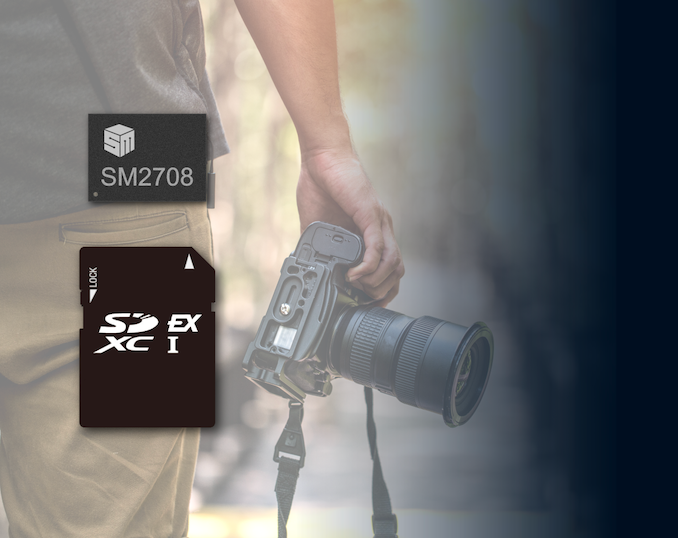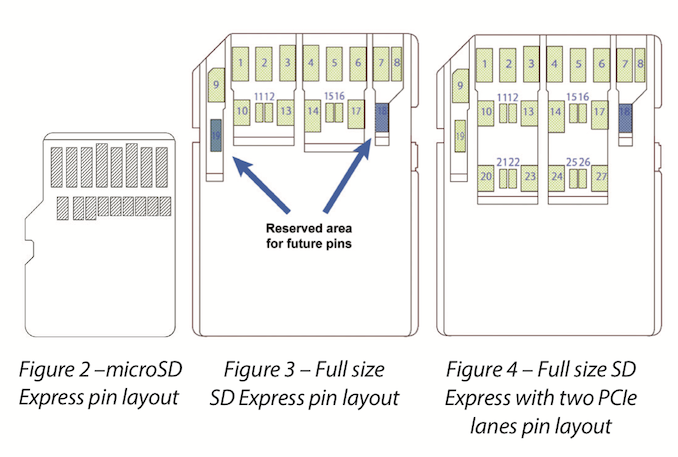- Регистрация
- 17 Февраль 2018
- Сообщения
- 38 866
- Лучшие ответы
- 0
- Reactions
- 0
- Баллы
- 2 093
Offline
Silicon Motion has announced their first SD Card controller to support the NVMe-based SD Express interface. The new SM2708 controller is capable of sequential transfer speeds of 1700 MB/s, vastly higher than the 104 MB/s most SD devices and cards are limited to using the older but widely-supported UHS-I interface.
In 2018, version 7.0 of the SD specification introduced the PCIe and NVMe-based SD Express interface as the new way forward for SD cards. The older UHS-II and UHS-III interfaces developed in versions 4 through 6 of the SD standard and capable of speeds from 156 MB/s to 624 MB/s were abandoned in favor of a single lane of PCIe gen3 (~985 MB/s). Last year, version 8.0 of the SD specification added support for PCIe gen4 speeds and a second PCIe lane, bringing the theoretical maximum transfer speed up to almost 4 GB/s.
Silicon Motion's SM2708 is a two-lane controller, but still using PCIe gen3 speed, hence the top speed can't quite reach 2 GB/s. This has the potential to bring SD card performance up to near the levels of entry-level consumer NVMe SSDs for laptops and desktops—competitive with SSDs based on slightly-outdated controllers like the Phison E8T or Silicon Motion SM2263XT. The SM2708 controller uses two NAND channels instead of the four typically used by entry-level SSD controllers, but the SM2708 is capable of a 1200 MT/s IO speed that allows it to get good performance out of recent NAND flash generations without the power and size penalties of a four-channel solution.
In 2019, Silicon Motion's primary competitor Phison announced their PS5017 SD Express controller. This is based on the earlier SD 7.0 specification and thus is a PCIe 3 x1 design and limited to about 870 MB/s. In February 2021 Phison announced they were about to start shipping cards based on this solution. Silicon Motion's SM2708 controller might not take that long to turn into actual products, but they clearly have missed out on the first round of SD Express competition—though they may be able to leapfrog Phison's solution.
Underlying all the developments related to recent flash memory card standards has been the challenge of poor adoption. For years, storage tech has been advancing much faster than camera tech. Storage technology companies stand ready to supply more advanced memory cards, but they cannot succeed in the market unless there are host devices ready to use the higher performance. We've seen a decade of failed successors to the old SD and CF standards that now seem pitifully slow. SD's UHS-II and UHS-III, CF's CFast and XQD, and UFS cards have all been demonstrated as working technologies and all eventually made it to market to some extent, but with very limited success. The SD and CF worlds have converged on PCIe and NVMe as the way forward, adopting interfaces that already have a thriving ecosystem and long-term viability in other form factors. That makes it more likely that standards like SD Express will actually catch on, but it may still be several years before PCIe-based interfaces are supported on any phones or more than a handful of high-end cameras.


